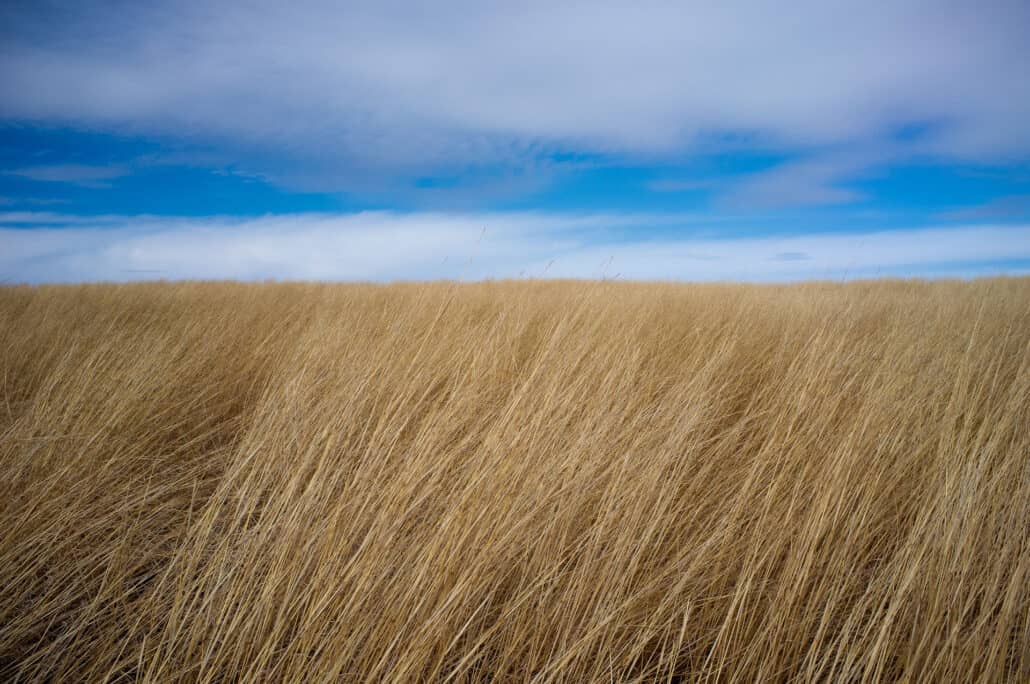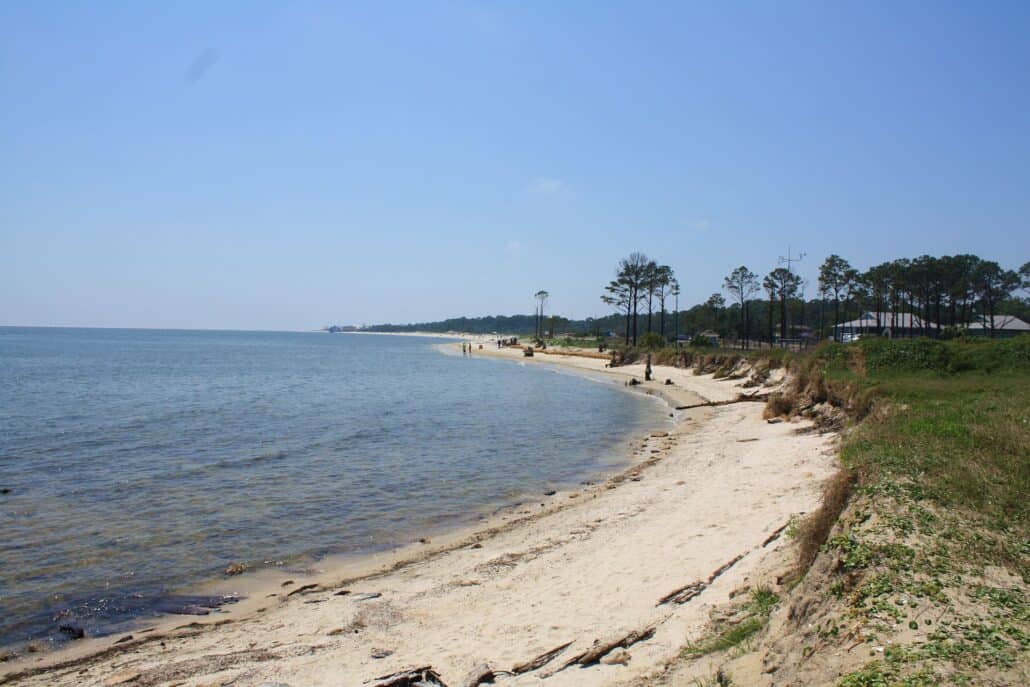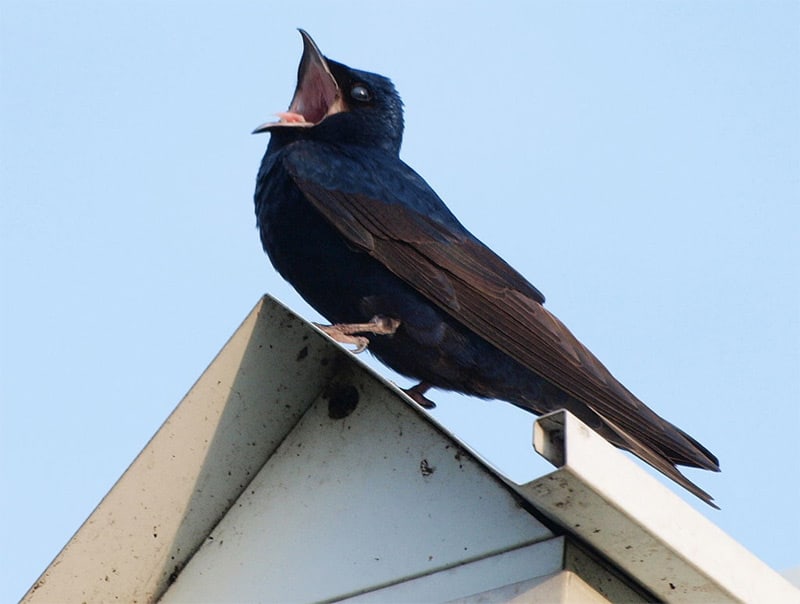Like the stream that bends to sea
Like the pine that seeks the blue
Minnesota still to thee
Thy sons are strong and true.
From the woods and waters fair
From thy prairies waving far
At thy call they throng
With their shout and song
Hailing thee their northern star.
This is the second line of the song, “Minnesota, Hail to Thee,” attributed to Arthur Upson. Woods, waters, trees and prairies offer a good description of Minnesota.
Folklore says that the giant lumberjack Paul Bunyan and his blue ox, Babe, are responsible for the landscape of Minnesota.
For example, Paul liked to have a good supply of fresh drinking water, so he dug Lake Superior. Babe’s hoofprints filled with water and became the many lakes that Minnesota is so famous for.
Paul Bunyan left the state occasionally and is responsible for both the Grand Canyon and the Black Hills.
Some say that Paul Bunyan is nothing but a character in a tall tale, but in reality, Paul was a birder. And why wouldn’t he be? It took five giant storks working in relays to deliver the baby Paul to his parents.
For those who don’t accept the accomplishments of Paul Bunyan, there exists more than one opinion as to how many ecoregions are found in Minnesota, but for the purposes of this guide, we are going to say that Minnesota has three major landscapes-prairie grasslands, deciduous woods and coniferous forests. A fourth one that is sometimes mentioned is the aspen parkland. Thanks to these various biomes (a uniform pattern of vegetation), the state has been blessed with the great diversity offered by these ecoregions.
Minnesota was a wild place. Or was it?
Perhaps a quote by Lakota Luther Standing Bear describes it best: “We did not think of the great open plains, the beautiful rolling hills, and winding streams with tangled growth, as wild. Only to the white man was nature a wilderness and only to him was the land infested with wild animals and savage people. To us it was tame. Earth was bountiful and we were surrounded with the blessings of the Great Mystery.”
Settlers changed the ecosystems of the state.
Minnesota was a land of promise for the pioneers. Pines that towered over the landscape in the northeastern part of the state were logged. Many acres of wetlands were drained. The prairies that once covered a third of the state were found to have a great talent for growing corn and were plowed. Hardwoods were cleared for farming.
These changes were contributing factors in the disappearance of such birds as the passenger pigeon, long-billed curlew, northern bobwhite, and whooping crane from the state.
Their disappearance brings to mind the Joni Mitchell song lyrics, “Don’t it always seem to go, that you don’t know what you’ve got till it’s gone. They paved paradise and put up a parking lot”
“To waste, to destroy, our natural resources, to skin and exhaust the land instead of using it so as to increase its usefulness, will result in undermining in the days of our children the very prosperity which we ought by right to hand down to them amplified. . . ”
– Theodore Roosevelt
It is hoped that we have learned our lesson. An old proverb says that the frog does not drink up the pond in which he lives.
Prairie Grasslands
When the pioneers arrived here, they encountered waves of big bluestem and Indian grass, as tall as a man, blanketing the land. It is not a landscape with many trees. The utility pole could be the state tree in the prairie.
The prairie grasslands run from the northwest corner of the state to the southeast corner, excluding some of the land along the Minnesota River.
Out of Minnesota’s original 18 million acres, only about 150,000 acres of native prairie remains. These grasslands (mesic, dry and wet) are ecologically diverse and the wide assortment of plant species provides habitat for many butterflies, mammals and birds.
A mesic prairie is one that requires a moderate amount of moisture. Common plant species found in mesic prairies contain big bluestem, little bluestem, Indian grass, prairie dropseed and porcupine grass.
The dry prairie contains little bluestem, side oats gramma, prairie dropseed, sand reed, needle grass and June grass.
The vegetation on the wet prairie is dense and tall with sedges, prairie cord grass, switchgrass, northern reed grass and big bluestem being found there.
Grassland birds include: bobolink, upland sandpiper, dickcissel, western meadowlark, prairie chicken, marbled godwit, Swainson’s hawk, short-eared owl, sharp-tailed grouse, grasshopper sparrow, red-winged blackbird, yellow-headed blackbird, ring-necked pheasant, gray partridge, red-tailed hawk and northern harrier.
The wetlands found here, prairie potholes provide habitat for assorted ducks and grebes, sora and Virginia rails, yellow-headed and red-winged blackbirds, marsh and sedge wrens, American bittern and trumpeter swan.
The regal fritillary butterfly, badger, northern prairie skink and Richardson’s ground squirrels are other creatures to be found in this ecosystem.
Deciduous Woods
These hardwood forests extend from southeastern Minnesota diagonally to Itasca State Park and Becker County in the northwestern portion of the state.
This ecosystem includes the maple-basswood forest (called the “Big Woods”), oak savanna, oak-hickory forest, lowland hardwood forest, aspen and birch forest and northern hardwood forest.
These woods provide prime habitat at ground, understory and canopy levels.
In addition to the maple and basswood, the “Big Woods” includes oak and elm trees.
Oak savanna consists of bur oak trees scattered over grasslands.
Birds of the deciduous forest are such as: scarlet tanager, eastern screech owl, broad-winged hawk, barred owl, great crested flycatcher, indigo bunting, pileated woodpecker, ovenbird, northern cardinal, red-eyed vireo, red-tailed hawk, red-eyed vireo, white-breasted nuthatch, wood thrush, black-capped chickadee, hairy woodpecker, downy woodpecker, brown thrasher, gray catbird, rose-breasted grosbeak, red-headed woodpecker, ruffed grouse, wild turkey, American woodcock and tufted titmouse.
The forests containing conifers, birch or aspen offer habitat for the chestnut-sided warbler, ruffed grouse, mourning warbler and white-throated sparrow.
Spring ephemerals, wildflowers that bloom early in the spring before the trees leaf out, thrive here. It has been said that when nature laughs, it does so in flowers. In these hardwood forests, the laughter is provided by the following spring ephemerals: hepatica, bloodroot, spring beauty, Dutchman’s breeches, trillium, wild ginger, Jack-in-the-pulpit, trout lily, may apple and skunk cabbage.
Large moths of an exquisite beauty like the cecropia, polyphemus and luna can be found here.
Wood frog, fox snake, spring peeper, hog-nosed snake, southern flying squirrel, gray treefrog, tiger swallowtail butterfly and several species of bats are other denizens of this habitat.
Coniferous Forest
Coniferous forests cover roughly the northeastern 40 per cent of the state. They are sometimes referred to as the boreal forests.
This landscape includes jack pine, white cedar, white pine, red pine, balsam, fir, white spruce and black spruce.
These forests provide a rich diversity of northern owls, vireos, warblers, flycatchers and woodpeckers.
Blackburnian, black-throated green, magnolia, bay-breasted and Tennessee warblers are found here. So are gray jays, black-backed woodpeckers, boreal chickadees, red-breasted nuthatches, pine grosbeaks and golden-crowned kinglets.
Peat is partially carbonized vegetable tissue that was formed by the incomplete decomposition of various plants in water. Peatlands in these forests make for habitat occupied by northern hawk owls, spruce grouse, great gray owls, alder flycatchers, Lincoln’s sparrows, clay-colored sparrows, Connecticut warblers, yellow-bellied flycatchers, palm warblers, Le Conte’s sparrows and yellow-rumped warblers.
Timber wolf, moose and bog lemming also find a home here.
Aspen Parkland
Another ecoregion that is sometimes mentioned is the aspen parkland. Aspen parkland is open terrain with wet prairie, sedge meadow, and scattered groves of aspen with thickets of alder and willow. It is a transition area between the coniferous forests and the prairies.
The aspen parkland ecoregion runs, roughly, from Red Lake Falls in northwestern Minnesota, north.
Indian grass, chokecherry, big bluestem, serviceberry, hazel, prairie fringed orchid, northern gentian and prairie cordgrass are typical plants.
Black-billed magpie, sharp-tailed sparrow, yellow rail, sharp-tailed grouse and sandhill crane find this habitat to their liking, as do moose.
The Land of 10,000 Lakes
Because Minnesota is the “Land of 10,000 (or more) Lakes”, it wouldn’t be appropriate to neglect mentioning a few things about water and the birds found near or in the water.
Loren Eisely wisely said that if there is magic on this planet, it is contained in water.
Minnesota has a magnificent landscape and its waterscape is every bit as exquisite.
Lakes
There is a great diversity to be found in the lakes throughout the state.
Each lake has zones varying with physical characteristics and vegetation types.
The littoral zone is the shallowest portion of a lake and contains rooted aquatic plants. The pelagic zone is too deep for rooted plants, but receives enough sunlight for algae to grow. The profundal zone is located below the pelagic zone. Light is unable to penetrate this area and this is where the sediments of the lake bottom are found.
The lakes provide habitat for ducks, geese, mergansers, terns, gulls, purple martins, bald eagles, swallows, ospreys, pelicans, mergansers, grebes, herons, egrets and loons.
Streams and Rivers
Streams and rivers provide food and cover to such bird species as belted kingfishers, Canada geese, common loons, American white pelicans, great egrets, terns, purple martins, ducks, geese, swallows, great blue herons, ospreys, mergansers and bald eagles.
Wetlands
Prairie wetlands can be seasonal or permanent. These wetlands may contain up to five concentric zones based on depth of the water and vegetation.
The outermost concentric zone is the low-prairie zone, which has moist soil, but no standing water, although it may flood in the early spring. Plants found here include sedges, mints, asters, cutgrass and blue-joint grass.
The next concentric zone is the wet-meadow, which contains wet soil and some standing water. Plats here included bur-reed, spike rush and water hemlock.
The next zone is the shallow-marsh zone that contains water from a few inches to a few feet in depth and plants such as cattail, bullrush and reed.
Continuing to move inward, the next zone of the wetland is the deep-marsh zone. Water levels are deep enough that there are few emergent aquatic plants. Plant species are submerged and free-floating leaved plants like sago pondweed, bladderwort, coontail and yellow water-crowfoot.
The open water zone in the center of a wetland can be too deep for many rooted aquatic plants. Here you would find duckweed, algae and free-floating plants.
Bird species common to prairie wetlands include mallard, Canada goose, northern pintail, blue-winged teal, canvasback, American bittern, black tern, sora, western grebe, redhead, lesser scaup, great egret, great blue heron, red-winged blackbird, American coot, Virginia rail, American white pelican, swamp sparrow, marsh wren and yellow-headed blackbird.
Conclusion
A land ethic…reflects the existence of an ecological conscience, and this in turn reflects a conviction of individual responsibility for the health of the land.
Health is the capacity of the land for self-renewal. Conservation is our effort to understand and preserve this capacity.
– Aldo Leopold from A Sand County Almanac
No matter which ecoregion you visit in Minnesota, you will be rewarded with a rich birdlife.
Each unique ecosystem provides interesting species and all you need to do is look.
Mourning Dove said, “Everything on the Earth has a purpose…and every person a mission.”
Make it your mission to enjoy seeing the birds of Minnesota.




